Hi,
I would like to ask some questions about these stones that I've been considering. No comments on the seller for now but I thought I've seen at least one post from a PS-er who'd purchased from them and they accept Paypal
1. 10ct Pink tourmaline pair, asking price ~US$160 / ct
They look good in the indoor and outdoor photos. I do expect them to go dark in low light conditions and can accept that. I'm also okay with the change in colour when tilted / brown tone factor in the videos that I was sent. I asked for fluorescent lighting photos but seller doesn't have fluorescent light
Would I be paying a fair price?
Also, is it cut too deep? it's about 11cm x 11cm x 7cm, so a depth of ~64%.
I've read on another seller's page (Alex Weber / PremierGems) that trillion diamonds can be cut to mid to high 30s depth ratios, which is very, very low, while still retaining their sparkle and not having a window. Wondering if the same thing might apply to trillion cut coloured stones
I know there are usual worries about photos being oversaturated, but the stones look very very vivid
Outdoors
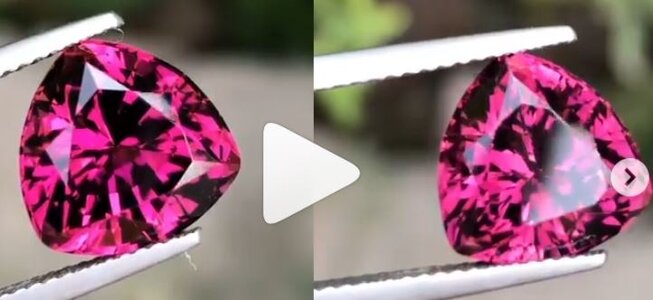
Indoors
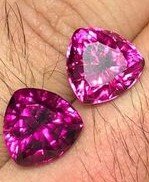
2. 8ct Tanzanite pair, asking price ~$260 / ct
The right stone seems to have a bit of red flash whilst the left definitely does not. The right also seems more blue and the left has a bit more grey but this was the only round pair they had and I've accepted it.
Is the pricing fair? I'm trying to use this to replace my desire for royal / cornflower blue sapphires. I know there will always be a tiny bit of purple in tanzanites but I'm fine with that
Outdoors
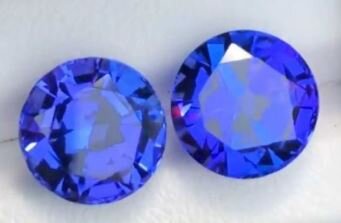
Indoors
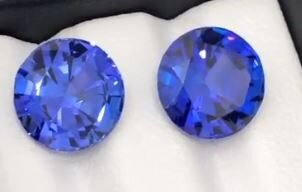
Indoors showing the grey in the left stone
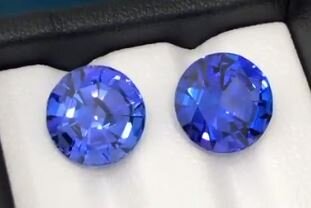
I've pretty much decided that I will want these 2 pairs if they are as they are - is there anything that I'm not seeing?
Also considered getting another pink tourmaline that the seller is selling as a rubellite. It looks very glowy and I've seen a few threads debating the use of "rubellite" and it seems to be more of a marketing term, although some labs will test and declare it.
This is ~4cts and ~$174 /ct
Couple of questions:
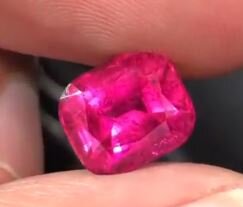
Photo showing pit on side facet
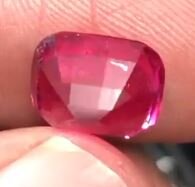
From afar
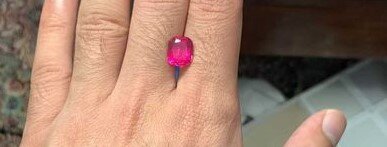
I live in a sunny country so the weather isn't a concern for me when buying tourmalines
TIA!
I would like to ask some questions about these stones that I've been considering. No comments on the seller for now but I thought I've seen at least one post from a PS-er who'd purchased from them and they accept Paypal
1. 10ct Pink tourmaline pair, asking price ~US$160 / ct
They look good in the indoor and outdoor photos. I do expect them to go dark in low light conditions and can accept that. I'm also okay with the change in colour when tilted / brown tone factor in the videos that I was sent. I asked for fluorescent lighting photos but seller doesn't have fluorescent light
Would I be paying a fair price?
Also, is it cut too deep? it's about 11cm x 11cm x 7cm, so a depth of ~64%.
I've read on another seller's page (Alex Weber / PremierGems) that trillion diamonds can be cut to mid to high 30s depth ratios, which is very, very low, while still retaining their sparkle and not having a window. Wondering if the same thing might apply to trillion cut coloured stones
I know there are usual worries about photos being oversaturated, but the stones look very very vivid
Outdoors

Indoors

2. 8ct Tanzanite pair, asking price ~$260 / ct
The right stone seems to have a bit of red flash whilst the left definitely does not. The right also seems more blue and the left has a bit more grey but this was the only round pair they had and I've accepted it.
Is the pricing fair? I'm trying to use this to replace my desire for royal / cornflower blue sapphires. I know there will always be a tiny bit of purple in tanzanites but I'm fine with that
Outdoors

Indoors

Indoors showing the grey in the left stone

I've pretty much decided that I will want these 2 pairs if they are as they are - is there anything that I'm not seeing?
Also considered getting another pink tourmaline that the seller is selling as a rubellite. It looks very glowy and I've seen a few threads debating the use of "rubellite" and it seems to be more of a marketing term, although some labs will test and declare it.
This is ~4cts and ~$174 /ct
Couple of questions:
- Is there a "glow"?
- I know rubellites tend to not be clean, but is this too included?
- The seller disclosed that there is a pit on the side facets, will this affect durability?
- I also thought I saw a line running throughout the entire stone (from top LH corner to bottom middle of the stone), which the seller said is inside the stone and didn't confirm if it was running throughout

Photo showing pit on side facet

From afar

I live in a sunny country so the weather isn't a concern for me when buying tourmalines
TIA!







300x240.png)